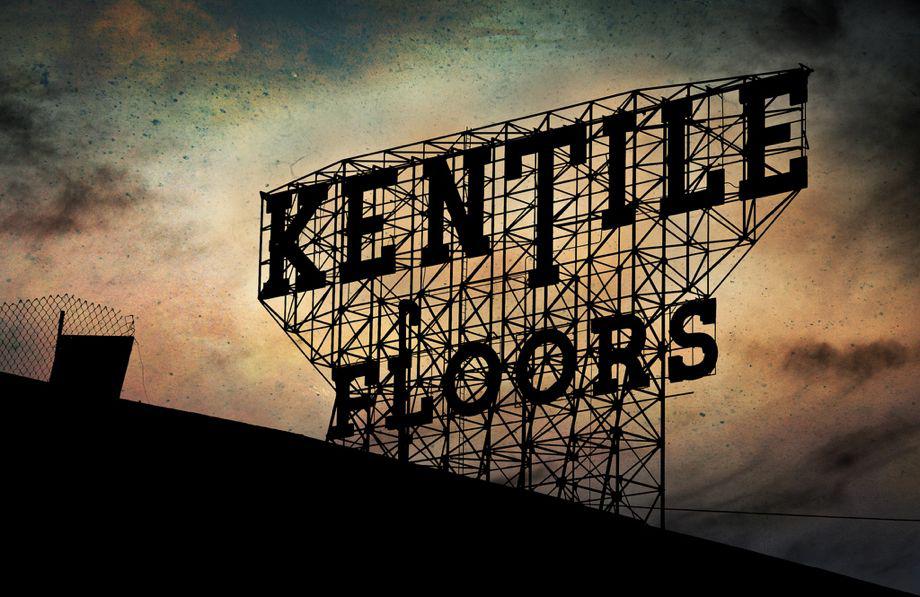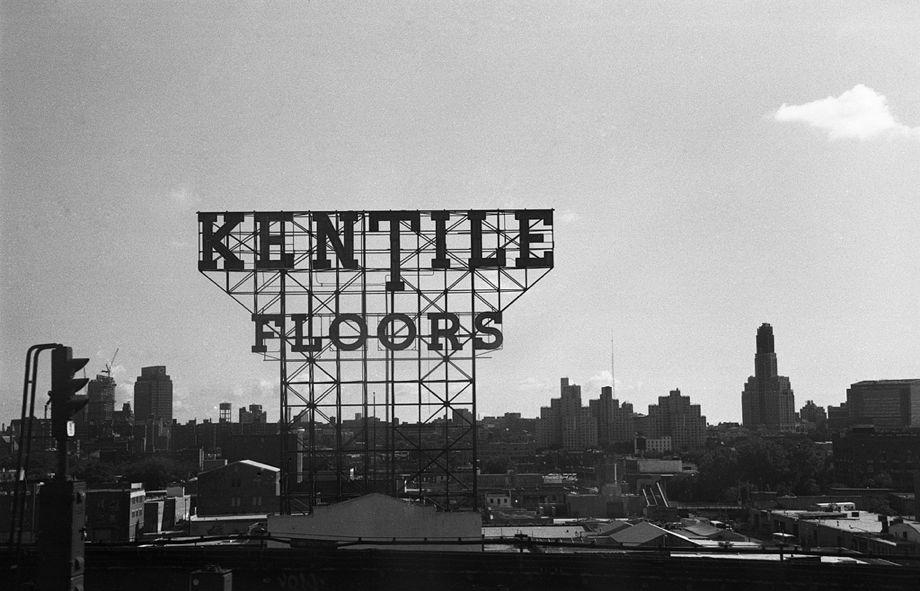Update, June 13, 2014: According a June 12 New York Times article, the sign will be taken down and donated by the owner to the nonprofit Gowanus Alliance, which will be in charge of installing it in a new location nearby.
The Kentile Floors sign along Brooklyn’s Gowanus Canal has dominated the local skyline since 1949. The eight-story-tall letters, which were once lit in purple neon, no longer symbolize the business it originally advertised but remain a visible token of the area’s storied industrial past.
On June 5, the New York Times reported that a demolition permit had been approved for “Full Demolition of Kentile Sign at 111 9th St. Brooklyn, NY.” Building owner Ely Cohen hasn’t yet spoken publicly about his plans to scrap the sign. But scaffolding around the sign that began to go up last week did not go unnoticed by local residents glimpsing the change from the Gowanus Expressway or an F train window, and some have begun a passionate fight to save the sign.

Photo by Spencer Platt/Getty Images
Illustrator Stephen Savage, who has lived in the area for 20 years and passes the sign every day on his walk to work, told The Atlantic that the sign is “the de facto logo of Brooklyn.” He added: “Gowanus is not going to look like it does now in 10 years. The taking-down of the sign is the first step in taking this down into a soulless new neighborhood with no connection to its past.”
According to the Municipal Art Society of New York, the Kentile factory employed more than 400 people during the 1960s. But many of the floor tiles that it once proudly marketed to post-war suburbanites as being “a dream to clean” contained asbestos, a fact that later (after the company had left Brooklyn) led to its bankruptcy and closure.
And while it might seem irrational for locals to get so worked up about what amounts to a sign for a defunct company that once sold life-threatening commercial products, Charlie O’Donnell, who works for Brooklyn Bridge Ventures, wrote in a personal blog post that the fight for the sign was more than a sentimental attempt to hold onto a piece of Brooklyn history.

Courtesy of A. Strakey via Flickr
“Brooklyn is attracting a generation of entrepreneurs who never saw Brooklyn in its industrial heyday, but feel like the borough is uniquely positioned and a historically fitting place to produce their products and serve creative communities,” he writes. “So while it’s easy to think that the Kentile sign is a relic of a bygone era, it may actually be the symbol of a bright future for a growing manufacturing base. It is a reminder to those who dare to create that yes, things can get made here—they’ve been getting made here for a long time and will continue to do so.”
The Kentile Floors sign, which has long been immortalized in online photos and even a T-shirt, also has its own Facebook page and Twitter handle, with another devoted to its rescue. There have been two protests this week to fight for the sign. A petition to save the sign led by Councilman Brad Lander has nearly 2,000 signatures so far. It notes that efforts to landmark the sign were rejected last year by the Bloomberg Administration’s Landmarks Preservation Commission. “Mr. Cohen, we implore you to reconsider removal of this important piece of Brooklyn’s industrial landscape,” the petition reads. “At the very least, commit to preserve the sign intact and donate it to a conservation organization for future re-use in the Gowanus area.”
